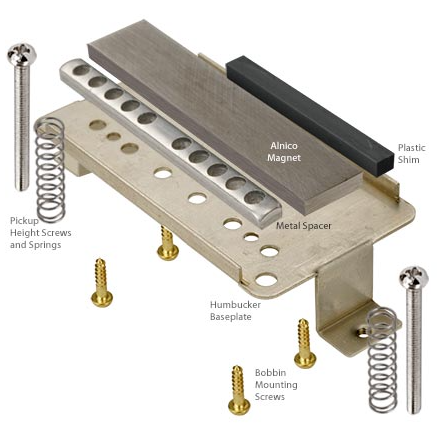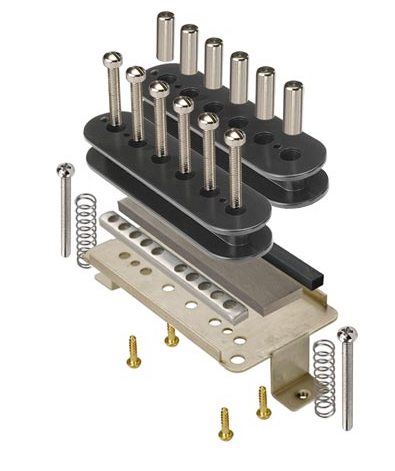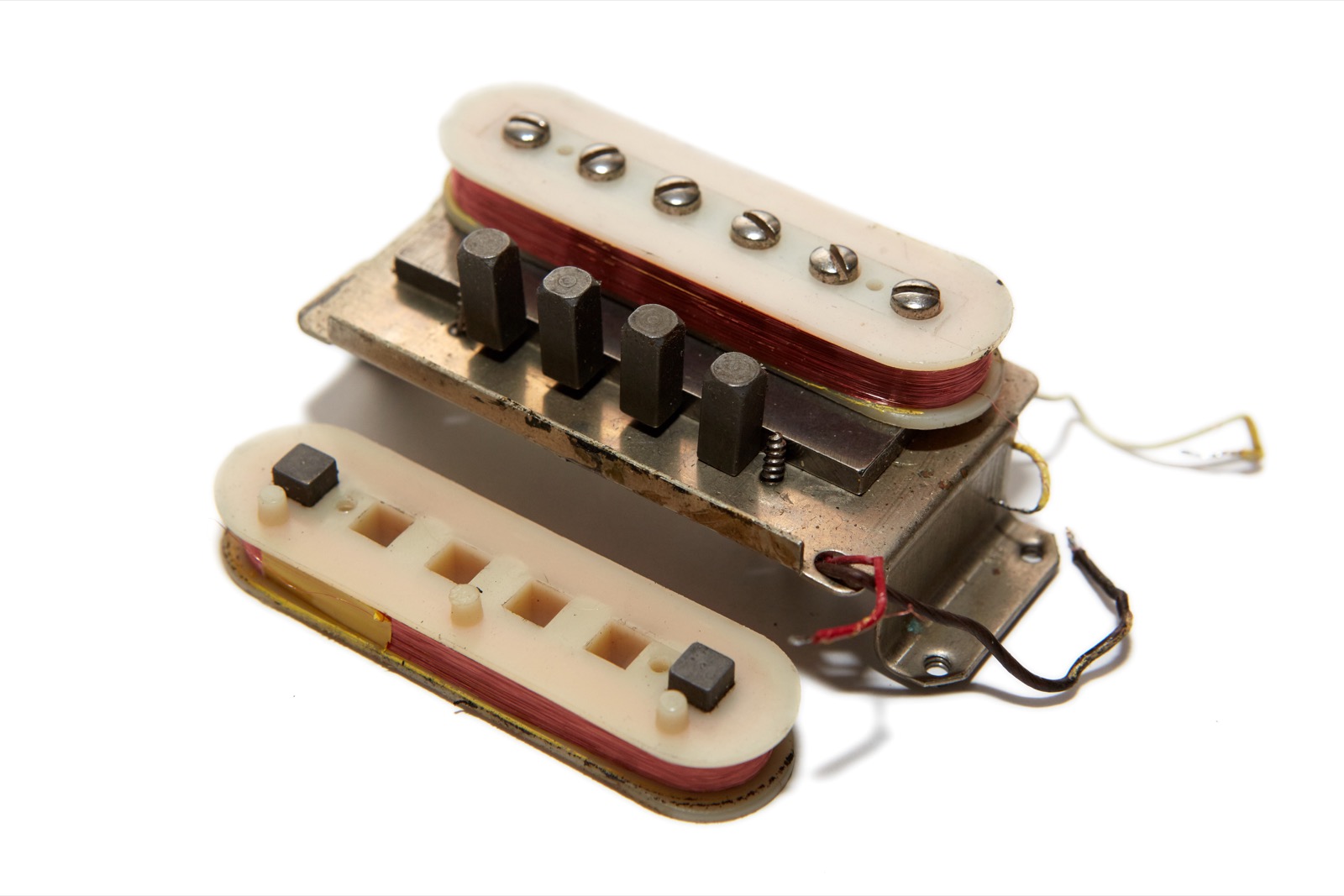Quantum Strummer
Senior Member
The slugs are likely just steel. One of my favorite Teisco pickups uses square slugs too…probably has little if any tonal impact but does look cool.  irate:
irate:
-Dave-
-Dave-
Do I understand your picture to be showing the wide bar magnet is only under the bobbin that holds the square metallic slugs?
M



Re: the coil winds, unless I can figure out a way to do it efficiently, it's going to remain a mystery. I've read that the average humbucker will have probably 5000 winds. I'm not sitting here and counting to 5000 while I unwind fragile wire. I need a machine to do it for me and that's going to me building a bad robot and I've got other stuff to do.
haha - I was about to ask how many winds were on each bobbin. and here's a crazy mystery: at first glance, it seems to me the bobbin with the adjustable poles has more winds than the bobbin with the square slugs.
This is one of the most fascinating posts of your LTG career, GAD. Thank you so much for posting!
Quite a few boutique pickuo winders mismatch the winding on the coils with the express purpose of getting more clarity out of a pickup. Hmmmmm.and here's a crazy mystery: at first glance, it seems to me the bobbin with the adjustable poles has more winds than the bobbin with the square slugs.
Quite a few boutique pickuo winders mismatch the winding on the coils with the express purpose of getting more clarity out of a pickup. Hmmmmm.
GAD, can you measure the DC resistance of the 2 coils separately? Assuming the coil wire is the same, different readings will give you an answer.
Here's something interesting (to me anyway) about the '70s & early '80s Maxon AlNiCo-based HB pickups I've been trying out lately: documented examples of these p'ups reveal coils wound tightly, evenly and to near identical DC resistance specs (per-pickup, that is…pickup to pickup readings do vary), yet these things are as alive & 3D sounding as any HBs I've ever used. If scatterwinding with a degree of looseness in the winds and coil-to-coil asymmetry are so important sonically, how did the folks at Maxon get such fab results without using either of those techniques?
-Dave-
Yes...even among Electrical Engineers their is a hierarchy of "magic" that is proportional to the highest frequency of design. In reality ever area can be incredibly complicated when you drill down into it.
However as a general rule DC is seen as "less magic" and millimeter wave frequencies (i.e. 18 to 300 GHz) "most magic".
In the industry electrical engineering who do antenna and RF (radio frequency) design are often known to use "FM" in design.
What is "FM"?
In civil language it is known as "Fornication Magic". Usually the first word is abbreviated!